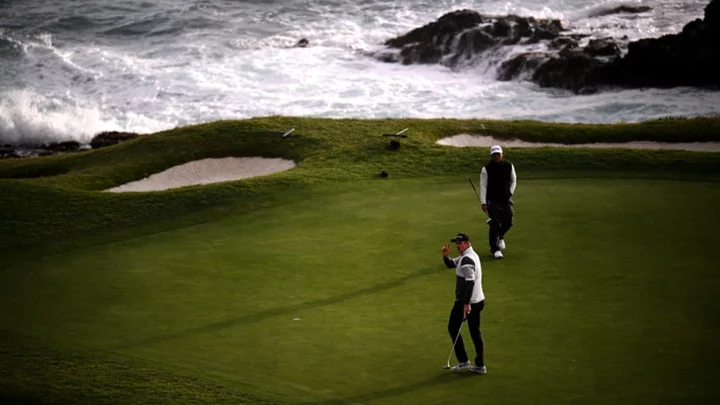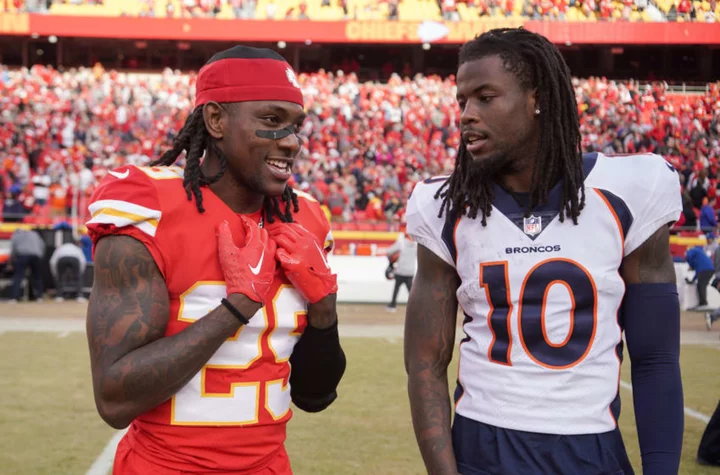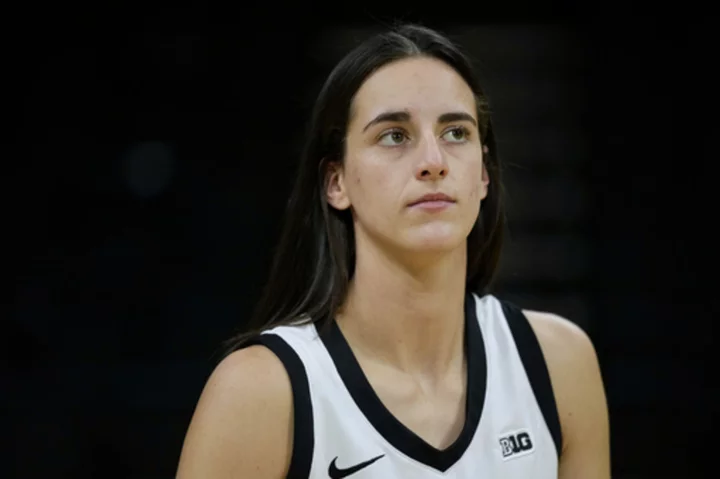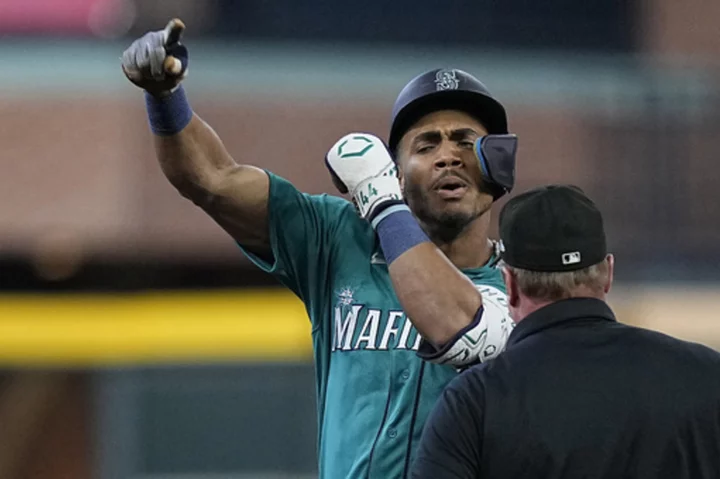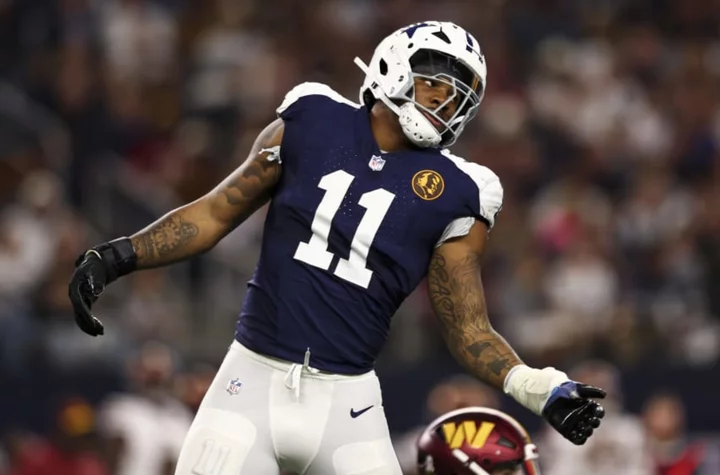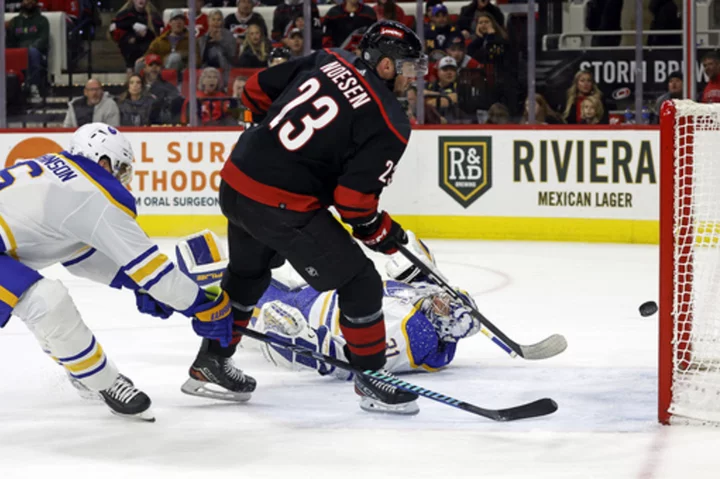My first love was baseball. The Detroit Tigers coming through occasional static, painting a picture of green grass and sandy patches where a complicated sport with a delicate balance of physical skill and nuanced mental mazes is played. There’s nothing like being a kid and knowing you’re hooked for life and it’ll be one of the greatest things that ever happened to you. Then you grow up and tuck away that bit of wide-eyed wonder at just how much you can enjoy something, never thinking but deep down knowing you might not ever get that again. If you’re lucky, you’ll be wrong and get a second go-around.
Somehow I got hooked on golf in the same way a few years ago. Woke up one day and literally everything about it seemed interesting. The strategy. The history. The technique. Its place in sports media. Studying a leaderboard before going to bed three times a week. My radio has a touchscreen now and the audio quality is exponentially better, but the comfortable feeling of getting the soundtrack to fandom that way has returned. One place is primarily responsible: SiriusXM PGA Tour Radio.
Listeners can hear on-site broadcasts of each round of every major tournament and live coverage of PGA Tour events, in addition to the U.S. Women’s Open, the KPMG Women’s PGA Championship, the Augusta National Women’s Amateur, and the finals for the women’s and men’s NCAA Championships. Those are augmented by talk and analysis centering around the sport’s current events, player performances, tournament previews and postgame, plus interviews. It’s an invaluable resource for learning about the game — both through the lens of what’s happening at its highest levels and how it can impact you personally. Several current and former pros, like Fred Couples, Rocco Mediate and Annika Sörenstam are there to lend their voices and experiences to round out a robust staff passionate and present to provide an outlet for a burgeoning fandom or one that’s been simmering for decades.
“Golf fans care about the game played at the highest level by the best players in the world, so we wanted to make sure this channel was the place that would not only give them access to the PGA Tour events and all the majors, but really overserve them when it comes to that access,” Scott Greenstein, SiriusXM’s president and chief content officer, told The Big Lead. “So that means live broadcasts of all four tournament days and delivering a broadcast that can make you feel – no matter where you are listening from - that you are on the grounds at Augusta National or TPC Sawgrass or on the 16th hole at the WM Phoenix Open. We continually look for ways to improve and innovate, but I’m just very proud of the channel we’ve built, the way we’re reaching golf fans and the voice we’ve established within the sport. We’re hearing from subscribers and listeners who tell us how much they enjoy the coverage and are also finding meaningful ways to improve their play and enjoy the game more. And we also hear from the people in the golf industry – from tour pros to club professionals, caddies, and agents – who are listening and enjoying the content. That is always wonderful to hear and it’s one way we know we’re making an impact with this channel."
“We’re all looking for ways to improve our game, whether you are a 2-handicap or a 22-handicap," he added. "We’re giving our listeners access to several of the country’s top instructors on the channel. Not only can you tune in to Michael Breed’s show and hear him share swing tips, but if you have a specific question about your short game or equipment or some other topic, you can call in to the show and ask him directly.”
At this point, golf's greatest selling point might be that there's a lot of it for four days most weekends. An incredible amount of information to contextualize in real-time and upon reflection. It’s the ultimate à la carte sport in an à la carte world, with consumers having the opportunity to tailor their own investment. Want to overdose on approach shots and lag putts to the point that it makes a fall football slate feel paltry? Go nuts. Want to check out the back nine every Sunday to observe a million different characters shuffle and provide drama? That’s normal too. But the other side of having so much to choose from is that it presents some hard choices. Once addicted, how does an average suburban dad like myself find time to live life while also keeping one eye on the action? How to prevent the various school runs and Little League games and trips to the big box stores from becoming the enemy?
The answer might be by keeping two ears on it instead.
Span the expanse of sports media and you'll find no bigger anonymous superstars than the producers and directors who put their stamp on live coverage. They are creating a documentary without the safety net of an edit bay, making choice after choice at breakneck speed, tasked with being on top of everything at all times. Success for them, like an umpire or referee, is when you don't even notice their presence. But make no mistake. They are there, tackling a virtually impossible, unrelenting task.
“Golf is so hard to consume,” said Jeremy Davis, program director for SiriusXM PGA Tour Radio. “You think about walking around a golf tournament or being at a golf tournament, it’s literally impossible to see it. How do you package all that together in a way that allows someone to sit at home comfortably on their couch or turn left into the daycare and understand what is happening at the same time? We have to serve both of those audiences. That’s where the mastery of the craft comes in. We can show every golf shot and lay it all out there like, here’s what happened. But taking the time to try to anticipate some of those storylines pays off.”
He outlined the broadcast's plan for filling the two buckets as time marches on, a mix of left-brain and right-brain endeavors. In some ways, following golf super closely conjures memories of working on an agate desk. Knowing where everyone is on the leaderboard and when they are on the schedule is of paramount importance. And we all need a caddie to shepherd us through that.
"Thursday and Friday you have this sort of Wild West approach to golf," Davis explained. "Everybody’s out there and you don’t have any ideas where the leaders are going to be or come from or what time they’re going to tee off, so the leader could finish at noon or 6:30 or 4. Thursday you can end up in a situation where the last hour of the day you have nobody on the golf course that’s within four shots of the lead. Friday you have cutlines so you have people who are completely out of the tournament that matter to the tournament because even if they’re two-under, if they make a birdie to get to one-under, that can change the line and you have to be attune to that. Saturday and Sunday you shift pace and now your whole morning is people that are 10 shots, 12 shots back. Then you get into this super-concentrated, hyper-focused three-hour window that the golf audience is used to: consuming the back nine, final 13-15 holes from the leaders and guys who are playing well for the week. We’re tasked with covering all of it and wading through all of it.
"A lot of the prep is really just built around making sure we have a system that will allow us to be 100 percent or 10 percent at any given moment throughout the entire week, whether that’s Thursday or late on Sunday. We need to understand what things are going to happen, what things can we predict that are going to happen in this tournament so that we can prepare for when we do have to make decisions in the moment. So we have time to focus on that and not worry about the stuff that we could have predicted and that allows us to tell the story a little better."
In the history of the job, no one has ever thrown a perfect game. Sports' magic is that no one knows what's going to happen. Anticipating what will emerge as the big picture is one aspect. Keeping a crisp pace and cutting the fat off a prolonged pause is another. Each player moves at their own speed and all swings are not created equal. For all the information Davis' team has gleaned through years of experience, there's no way to know if someone is going to spin it 35 feet away for a routine two-putt par, hole out from the fairway, or bury it into the face of a bunker.
“In a five-hour show you’ll make up to 700 different decisions and if we can get 500 of those right, that’s a good day,” said Davis.
"The best producer I’ve ever worked with," SiriusXM host Brian Katrek said of Davis. "He just understands this game and he gives you exactly what you need exactly when you need it. We have some new folks that have come onto the team through the years and they don’t realize the stuff Jeremy’s kind of mumbling to them. Because he doesn’t yell at you. He’s just going to give you one little nugget and if you’re fighting it, you’re going to have a long day. You just embrace. Justin Ware [executive producer for SiriusXM PGA Tour Radio] is just as talented — if Justin senses that you lost a shot and he can see it on the monitor, he’ll give you exactly what you need to help you finish that call. It can be terrifying when you’re on the course and you’ve lost the ball. I mean that’s your whole job out there. When you realize that you have two other people there to help you pick up the pieces, that’s what being on a team is all about."
“If somebody’s listening on a radio, they don’t know what the atmosphere is like,” said Maureen Madill, an on-course roving reporter. “I try to call on all the senses. So if I’m walking past a concession stand and they’ve got hamburgers on the go, I might bring that in because it’s another sense and you’re trying to take people with you. You’re trying to paint the picture for them. I'm seeing things they can’t see. I will see the lie of the golf ball. I’ll see if the grass is laying against it. I’ll know if there’s a bit of an angry vibe between the player and the caddie. It’s just trying to pick that up and convey it in a way that’s interesting. That’s a challenge because you don’t want to be too repetitive in saying the same thing all the time.”
Madill, born in Northern Ireland, returned to major coverage during this year's Masters after three-plus years of health issues sidelined her. And that's a great thing because she is a wordsmith who paints with a different brush — one dipped in colors not usually described on this side of the Atlantic. It's a small thing, like the millions of small things that have proven cathartic in exploring a new love. Getting introduced to a new stable of announcers and reporters, learning their quirks and personalities, and having them meld together to a point where you almost appreciate the seams and varying textures is a reminder that there are countless ways to do the job. There's no right or wrong way to experience golf, whether one is playing it or passively enjoying those who are better at it.
"Language is colorful and it’s to be used," Madill observed. "If you’ve never seen a golf match and you hear a thing a few times, you get it, don’t you? You understand what they’re talking about. There’s a lot of terms from the traditions of golf that I’ll use simply because the Americans don’t, really. It would be very foreign to me to say the ball was in the trap. For us it’s always a bunker. That’s natural to me, I won’t change that because it’s an American broadcast. All my colleagues will say trap. I’m not trying to be different, I am a little different, which I think the whole broadcast quite likes because you don’t want to be too same-y. I try to be very natural and think if I was explaining something to a friend."
That last line resonates. Sporting moments we experience on the radio are essentially having a friendly party explain what our eyes can't see. It just seems more personal. Listeners get to paint a mental image in their heads before seeing the video and how it compares. Just like being a kid again, in such a small yet uniquely creative way. They get to store that thing up there in connection with the memory. Perhaps it's counterintuitive but the case could be made that golf on the radio is more of an active experience than its television colleague. The mind's eye is really challenged to keep up and the process of providing the audio for that project requires as many details as possible without inundating or taking the fun out of it.
Listen to a Friday or Saturday afternoon call and notice the diversity of reports and play-by-play shaping building a bit of a quilt. There are more speakers on a golf broadcast than any other and they all get to tell a little bit of the story. As a critic, it feels as though it is both the heaviest lift and the one most required to not sound harried or stressed or rushed. All against the backdrop of 18 different arenas and dozens of meaningful players come the weekend. There are so many moving pieces and permutations.
Editorially, it's fascinating.
“Doing television, you’re the captions under the pictures,” Taylor Zarzour, who is an on-air host and executive with SiriusXM PGA Tour Radio, said. “You’re trying to accentuate what the viewer can already see. In radio you are truly all of the senses. I think that’s especially true when it comes to doing a golf broadcast. While other sports are confined to an obvious box that almost everyone listening to is already familiar with, golf is completely unique because it’s a different set of challenges on every single hole, every single week in every single tournament.”
Nothing else across the spectrum allows broadcasters to stand 10 feet away from greatness for hours at a time. It feels up close and personal. There's an intimacy inherent. It's an individual sport with hundreds of disparate personalities, and endless opportunities to notice stuff. Keen eyes are still required but those who swing the clubs are exposed for five hours a day, plus on the public practice grounds, open for careful dissection.
“For my football prep I’ll meet with the head coach, two assistant coaches and a player or two and I might go to a practice but it’s not like I’m talking to all the players while they’re practicing or I’m seeing them with their helmets off,” Zarzour said. “I have access but I’m not that close to the action and I can’t communicate with all of the people who are practicing and certainly I can’t communicate with them while they’re playing. That’s the case for every other sport. Then in golf, it’s really unique to have that kind of access and be five feet away from someone competing to win millions of dollars. To be out on the golf course and in many cases talking to them while they’re competing. I don’t know that that happens in any other sport. You may be able to listen to the communication in a NASCAR race or be able to talk to a driver right after they get out of a car. To be able to stand behind someone as they warm up on the range and then walk with them as they compete in a tournament is amazing.”
“When we first started they didn’t know who we were," said Katrek on his first forays out on the course. "And that’s everybody. We’re talking about the media officials, the rules officials and the parking lot guys. But over the years you can tell that we have built trust. I think that handling them fairly for the most part is a big deal. Luckily our sport is just nicer than most of the rest so it’s hard to get in too much trouble being too critical about a guy. The rule of thumb is you don’t say anything you wouldn’t say to that person. If you were a Me guy and you wanted to give that hot take to get a reaction, you’ve kind of been weeded out. Those folks don’t last long in golf because it’s not going to work. They’re not going to want to talk to you.”
A tectonic shift in global golf last week naturally caused every fan to react in a strong way and those ran the gamut but most felt overwhelmingly upset or at the least, a bit anxious. Immediate vitriol has melted into general confusion even after a spectacular tournament up in Canada. But importantly, it's forced people to re-evaluate just what it is they love about golf. It's a cathartic activity for anything one enjoys.
Ultimately, for as cruel a time it can be, there's a certain sense of fairness to the whole endeavor. Nasty breaks tend to stay imprinted in scar tissue yet there are the same number of favorable bounces and lies out there to give back what is cruelly taken away. And it took a bit for me to realize that. Extrapolate that out and see the same sort of editorial complex around it with similar values. Beneath a heavy layer of geniality, there is honest assessment of who is performing and who isn't, who is letting the mental side get the best of them, or if a course is pulling its weight or not.
We just had a time where a large portion of the public raced for golf talk in the same way they've become transfixed by Los Angeles Lakers coverage. On PGA Tour Radio there was honest-to-goodness authentic conversation in the aftermath. Listeners were smacked with the humanness of voices not masking the stunning enormity of the moment. Bryson DeChambeau was on in support. Scott Stallings had some scathing comments in the direction of Jay Monahan. Interspersed was a conversation that reflected the tone going on in so many group chats and on the eighth hole of municipals. A wide array of opinions. Spades correctly identified as spades.
"Sometimes when you get someone who used to play the game they tend to be cautious with how candid they are so one of the biggest things we look for is someone willing to tell the truth," Zarzour said. "Colt Knost is a great example of that. He has a ton of friends out on the PGA Tour, he played out there for a decade, and he’s used those relationships and brought them on his own show and he’s willing to be as candid and honest and genuine in those conversations on the air as he would have them off the air. Getting that kind of access is invaluable. He did an interview with Jon Rahm after the Masters and it felt like the two of them were just drinking beer at a bar. It felt like that listening to it on the radio. That’s the biggest key: try to be entertaining and informative but most importantly have a lot of former players who are willing to give us as much access as they can. There was a real emphasis made by Scott Greenstein to entertain and inform the audience, which I really appreciate and share. But he also wanted to have as many people who played the game or are still playing the game as possible to stay connected to our channel."
There's an even longer version of this piece but it would strain our content management system so let's get to the TL:DR of it all.
PGA Tour Radio has quite literally helped me out of several jams, both figurative and traffic, since first tuning in on a lark. Ghosts of summers past have been floating around and I am genuinely looking forward to the future moments where history will find me in my car but still very much on the course in spirit. I wish I'd known about it years ago and could have been proselytizing sooner.
It's allowed me to experience something really good in this world. Something I'd never have thought possible. That's worth savoring and sharing.
SiriusXM's U.S. Open coverage will include 40 hours of live shot-by-shot coverage from the course across all four rounds of play. The broadcast team will feature lead host Taylor Zarzour alongside lead analyst Colt Knost. Brian Katrek, Carl Paulson, Dennis Paulson and John Maginnes will be on-course reporters. The SiriusXM team will also include Chantel McCabe, Jason Sobel, Drew Stoltz and Andres Gonzalez who will host coverage of the early groups on the course, provide analysis and leaderboard updates, and conduct interviews with players before and after their rounds.
This article was originally published on thebiglead as A Good Drive Unspoiled: SiriusXM PGA Tour Radio and the Magical Year.

